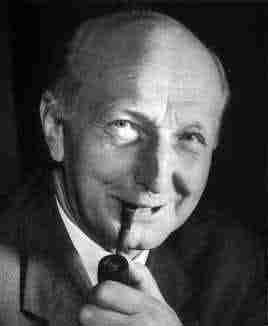
William Leonard Ferrar
 المؤلف:
P M Neumann and M E Rayner
المؤلف:
P M Neumann and M E Rayner
 المصدر:
William Leonard Ferrar, Bull. London Math. Soc. 29
المصدر:
William Leonard Ferrar, Bull. London Math. Soc. 29
 الجزء والصفحة:
...
الجزء والصفحة:
...
 16-8-2017
16-8-2017
 1058
1058
Born: 21 October 1893 in Bristol, England
Died: 22 January 1990 in Oxford, England

Bill Ferrar's father was George William Persons Ferrar (born in St Pauls, Bristol about 1870) who was a Lamplighter. His mother was Maria Susannah Ferrar (also born in St Pauls, Bristol about 1869). He had a younger brother Arthur Marchant (born 24 October 1904).
Bill Ferrar entered Queen's College Oxford in 1912 after a good education at Bristol Grammar School where his mathematics teacher had inspired him with a love of pure mathematics. In 1914 he won the Junior Mathematical Scholarship but his studies were interrupted by World War I.
Bill served as a telephonist in an artillery unit and in an intelligence unit in France. He returned to Oxford in 1919, graduated in 1920 with the best First Class degree, and took up a post in Bangor which he had been offered before he took his finals. He held this post for 4 years, and although happy there, he was keen enough to move to a more research oriented place that he made several applications. Bill was therefore delighted to accept Whittaker's invitation of a senior lectureship in Edinburgh where, in addition to Whittaker, his colleagues were Copson and Aitken.
The death of J E Campbell left a vacancy at Oxford which Ferrar filled in 1925. At Oxford, although his main aim was to be heavily involved in research, he had to spend much time teaching and examining. His salary was such that he really had to supplement it to provide enough to support his family and he did this by setting and marking school examination papers.
Ferrar wrote many research papers which deal with the convergence of series, an interest which came from working with G N Watson at Cambridge for during a summer vacation while an undergraduate. He worked on interpolation theory, a topic which was suggested to him by Whittaker. From about 1930 his interests turned towards number theory and he examined the convergence of series and the evaluation of singular integrals. These come from a study of Bessel functions which arise from applying summation formulae.
Hardy had been influential in setting up the Quarterly Journal of Mathematics at Oxford and Ferrar served as its editor from 1930 to 1933. In addition Ferrar published many papers in the Quarterly Journal of Mathematics during this period. He moved towards administration with the post of Senior Tutor at his College in 1934 and then, in 1937, he became Bursar of Hertford College, Oxford. He held this post for 22 years.
Ferrar is also famed for his 10 outstanding textbooks including A textbook of convergence (1938), Algebra: a textbook of determinants, matrices and quadratic forms (1941), and Finite matrices (1951).
Perhaps because of the disruption of his undergraduate course by World War I, Ferrar never obtained a doctorate. Copson, who was a friend and collaborator, suggested that he obtain a doctorate. In 1947 Ferrar submitted 35 papers and 2 books for the degree of Doctor of Science at Oxford and made many of his colleagues who had begun to think of him as solely an administrator realise what an outstanding research record he had.
In 1959 he gave up the position of Bursar, hoping for a quiet couple of years before he retired, but he was invited to become Principal of Hertford College so the last years of his career were anything but quiet.
He continued to write textbooks and help with school examinations in his retirement. He published Mathematics for science (1965), Calculus for beginners (1967) and Advanced mathematics for science (1969) all when over the age of 70.
In a personal communication, Michael Ferrar, W L Ferrar's son, comments on his father's interest in lecturing:-
In a letter to his Uncle at University College Nottingham my father was very critical of the standard of lecturing at Oxford in 1912.
It was perhaps in Edinburgh that the foundations were laid of his own high reputation as a lecturer. In those days many Edinburgh undergraduates had little money to buy textbooks and so were very dependent on lectures. If a lecturer overran his time they walked out because they had to get to their next lecture. If the lecture was good they applauded. My father was particularly proud of an occasion when he overran by several minutes and his audience stayed both to listen and to applaud.
Articles:
- P M Neumann and M E Rayner, William Leonard Ferrar, Bull. London Math. Soc. 29 (1994), 395-401.
 الاكثر قراءة في 1890to1894
الاكثر قراءة في 1890to1894
 اخر الاخبار
اخر الاخبار
اخبار العتبة العباسية المقدسة


